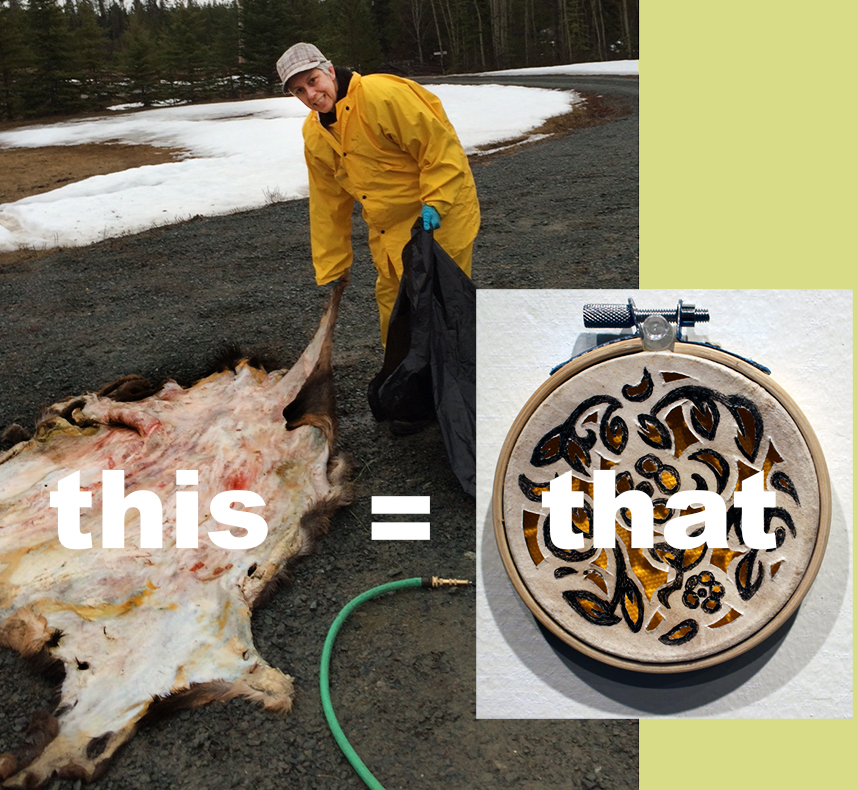This = That
 I spent the morning getting very wet. I am working with an Elk hide to clean and use it for my art practice. I learned how to tan hides the Native way in 2000 and I continue to practice it. There are many people out there who hunt for meat and some of them bring me the hides for my own use. Many of the parts on a wild ungulate are useful; parts that when made into tools, rawhide or leather will last for generations. When these objects finally wear out they will return to the earth to nourish it in a complete circle of life. So if these old practices are good for the earth, why don't we do them anymore? Are we afraid to get our hands dirty? It is definitely easier to just buy the finished product - but I think purchasing it rather than making it prevents us from:
I spent the morning getting very wet. I am working with an Elk hide to clean and use it for my art practice. I learned how to tan hides the Native way in 2000 and I continue to practice it. There are many people out there who hunt for meat and some of them bring me the hides for my own use. Many of the parts on a wild ungulate are useful; parts that when made into tools, rawhide or leather will last for generations. When these objects finally wear out they will return to the earth to nourish it in a complete circle of life. So if these old practices are good for the earth, why don't we do them anymore? Are we afraid to get our hands dirty? It is definitely easier to just buy the finished product - but I think purchasing it rather than making it prevents us from:
1) appreciating the labour that goes into making an object 2) realizing the consequences of our purchase on the earth 3) treating the object responsibly, ie: repairing it when it is broken rather than just buying another one.
I believe when we are removed from the labour of making an object, we are not aware of its true cost as retail cost is only represented in dollar signs and numbers and not in the process of making. Forgotten are the physical pain, process and sacrifice required for us to 'have' that object. We also don't associate the finished product with its origin. Some things should not be made from the materials that they are, materials and processes that hurt our environment and our people. Finding our way back to living with a smaller footprint will take practice and sacrifice, but it will be well worth it.
Take an object in your house and collage a 'this = that' photo. I guarantee it will be interesting.